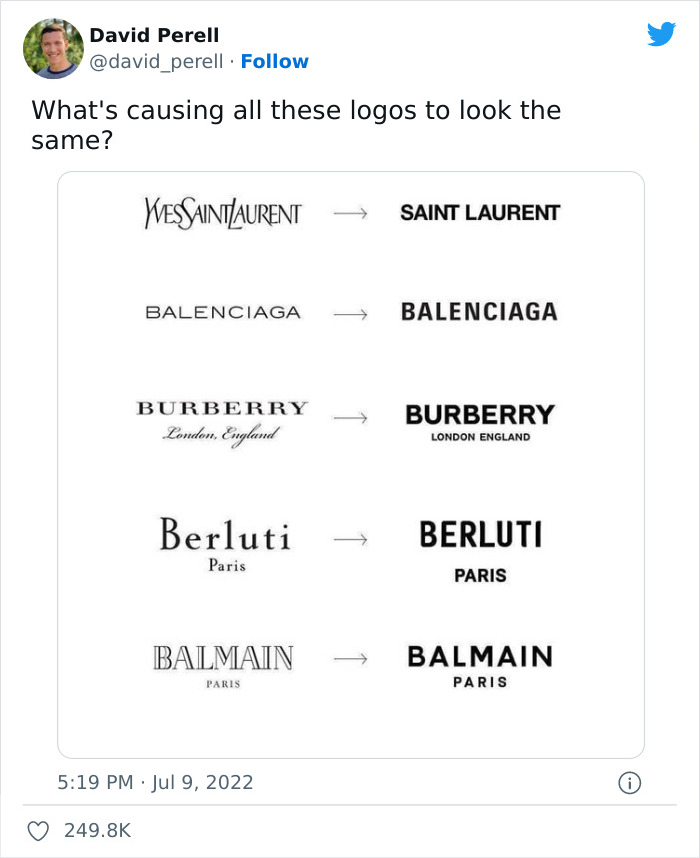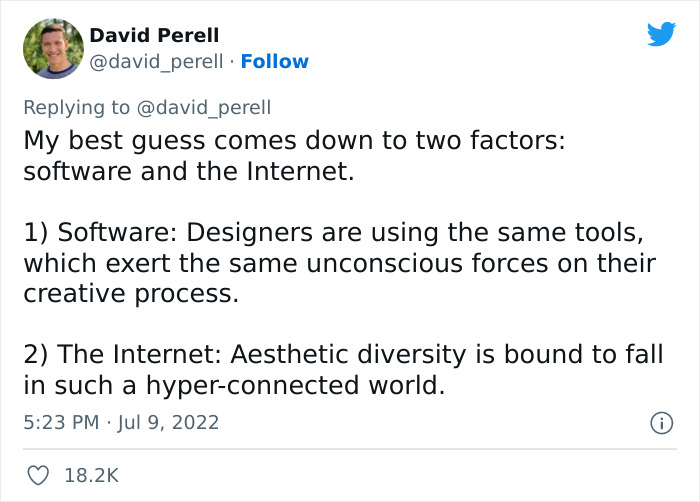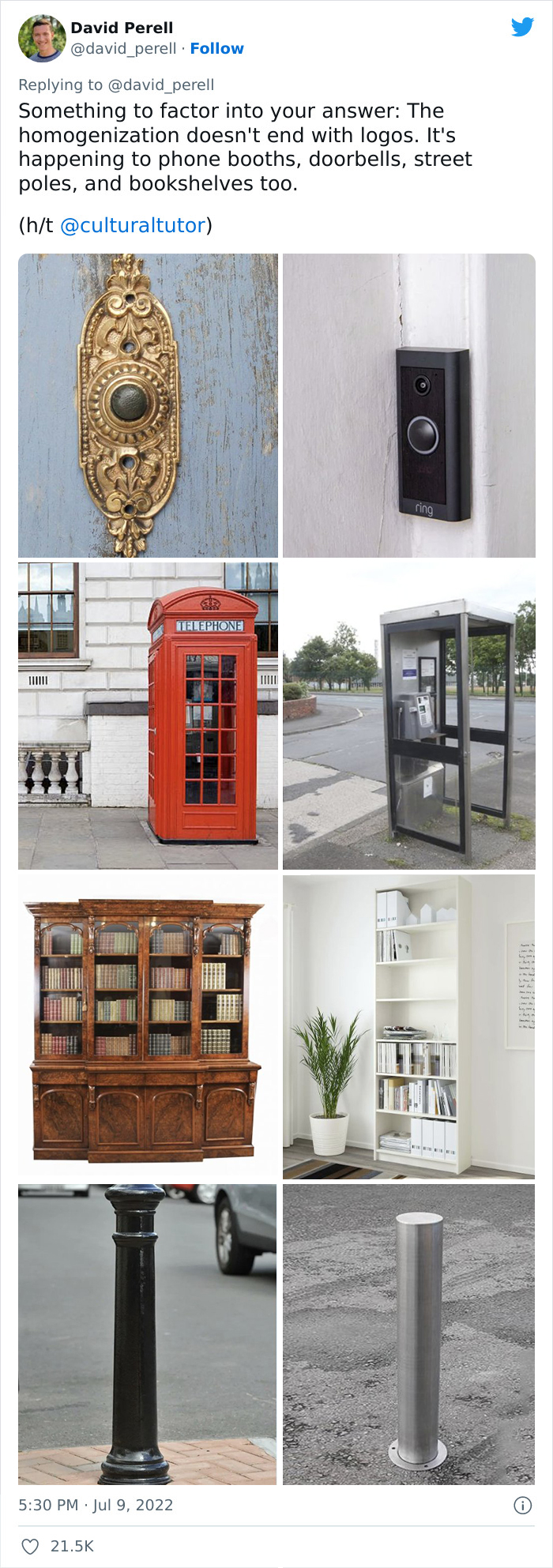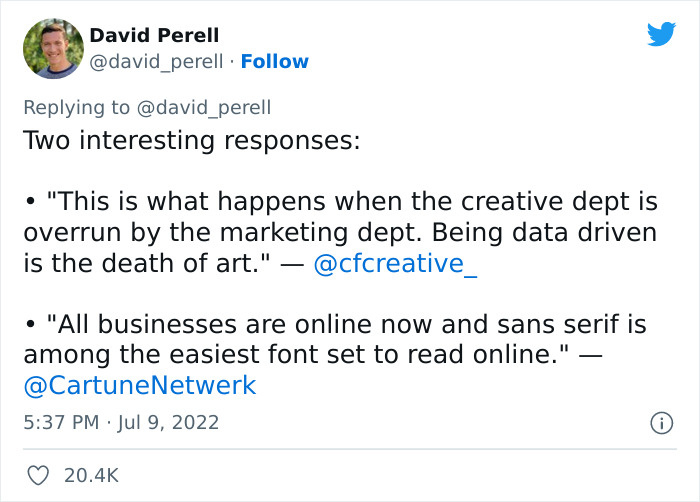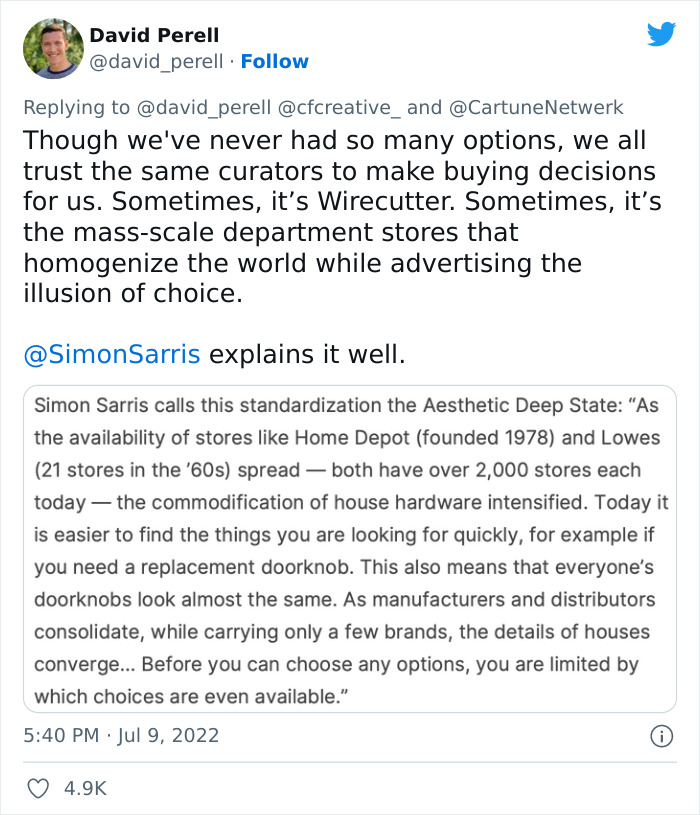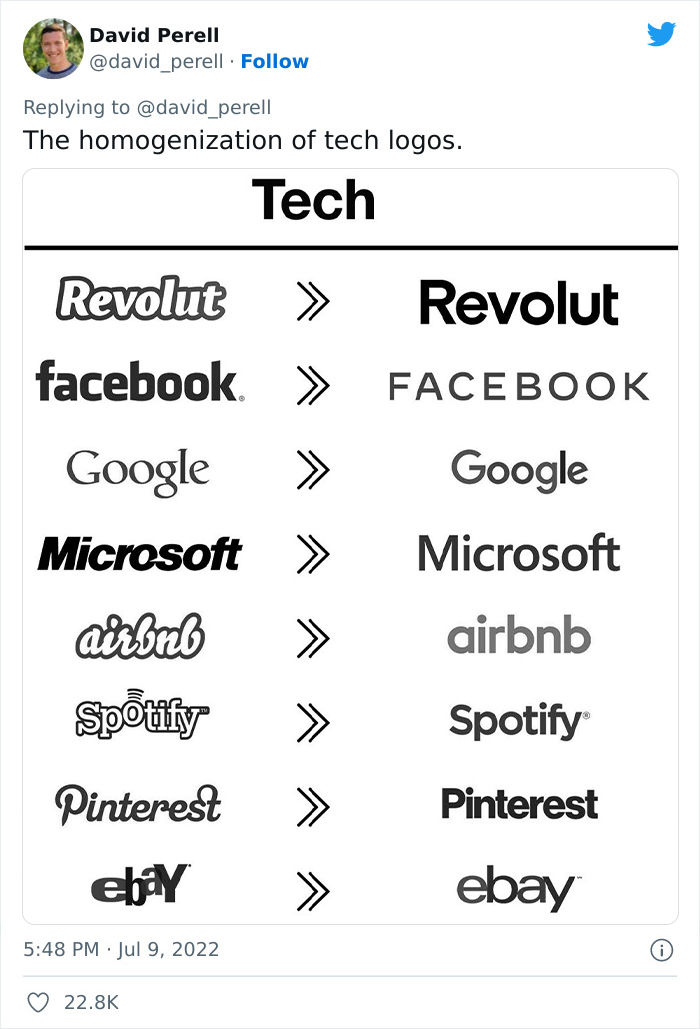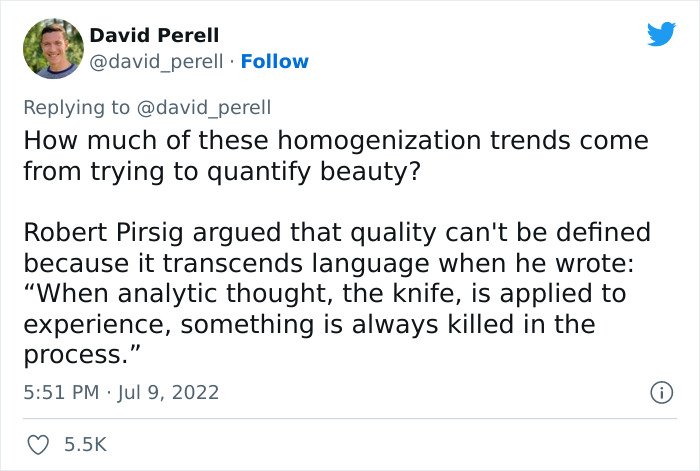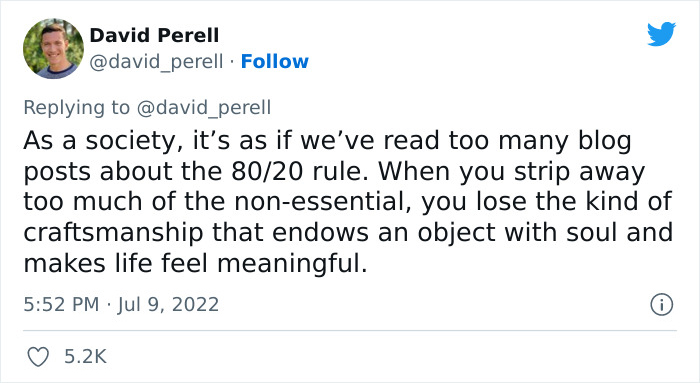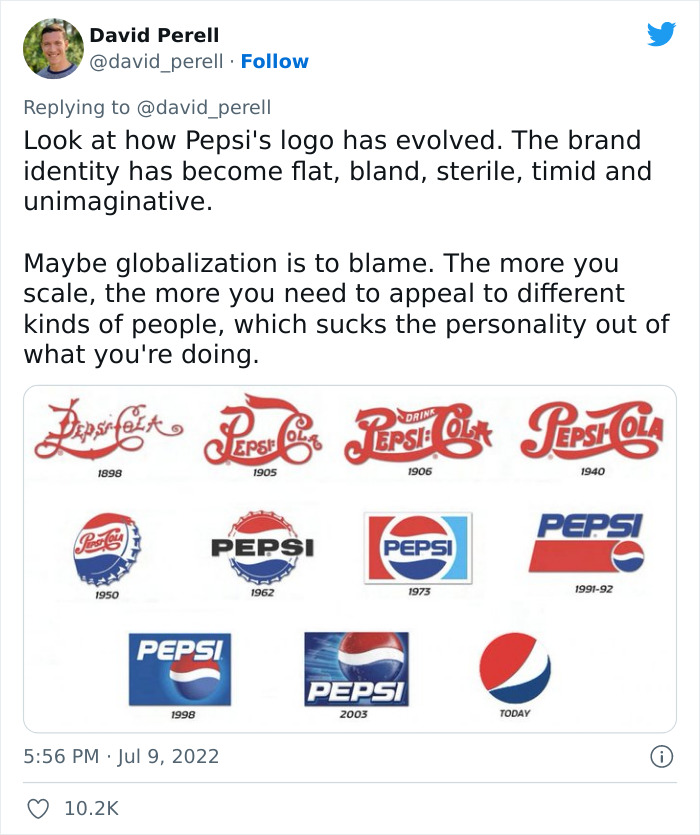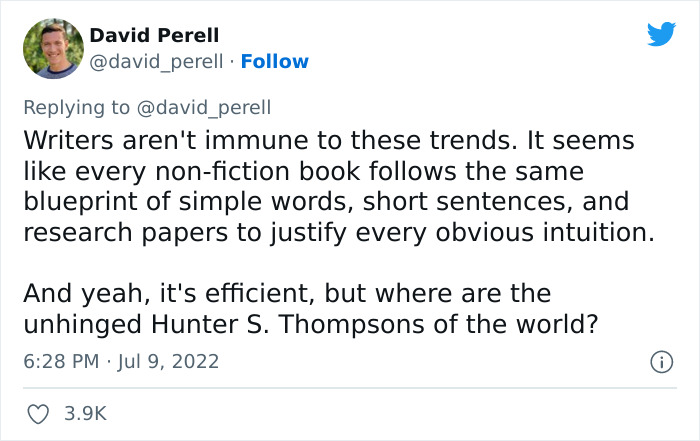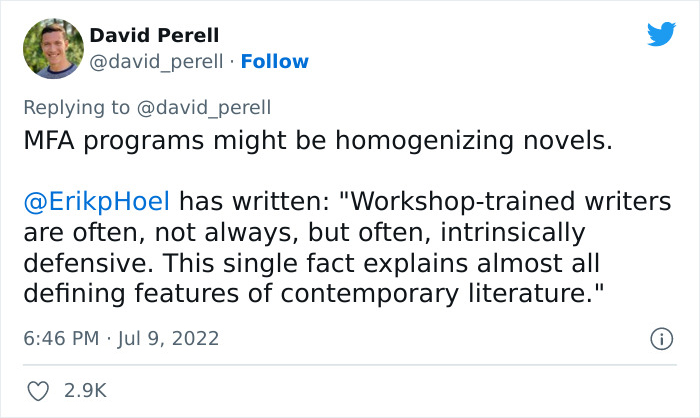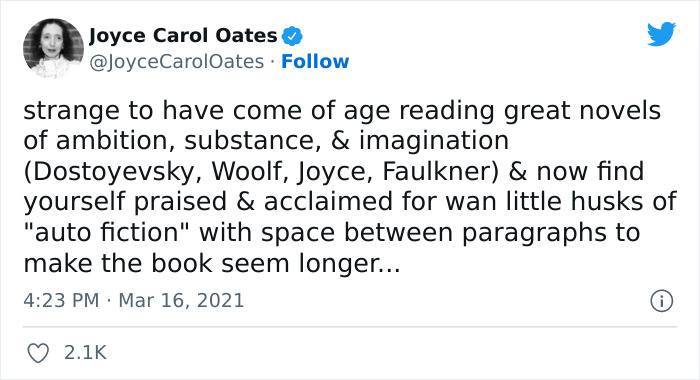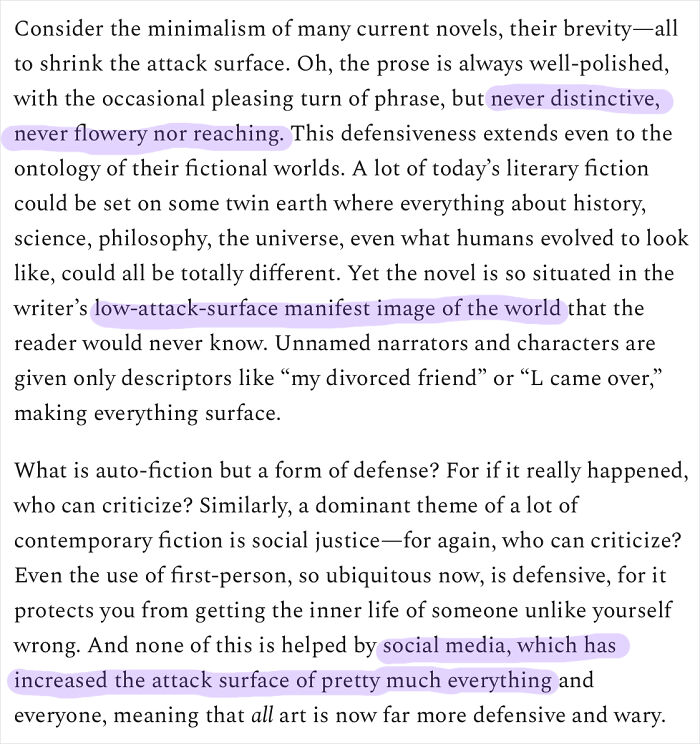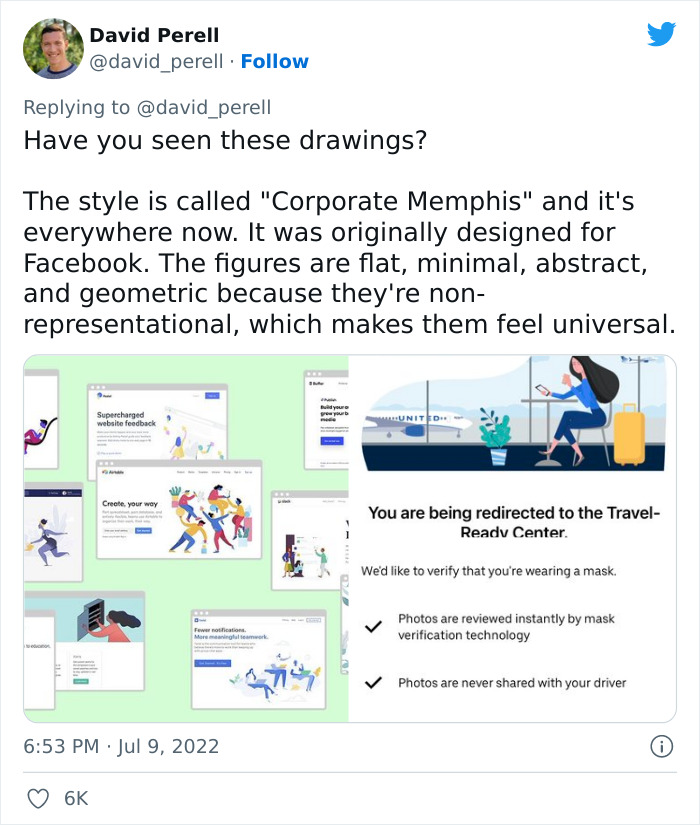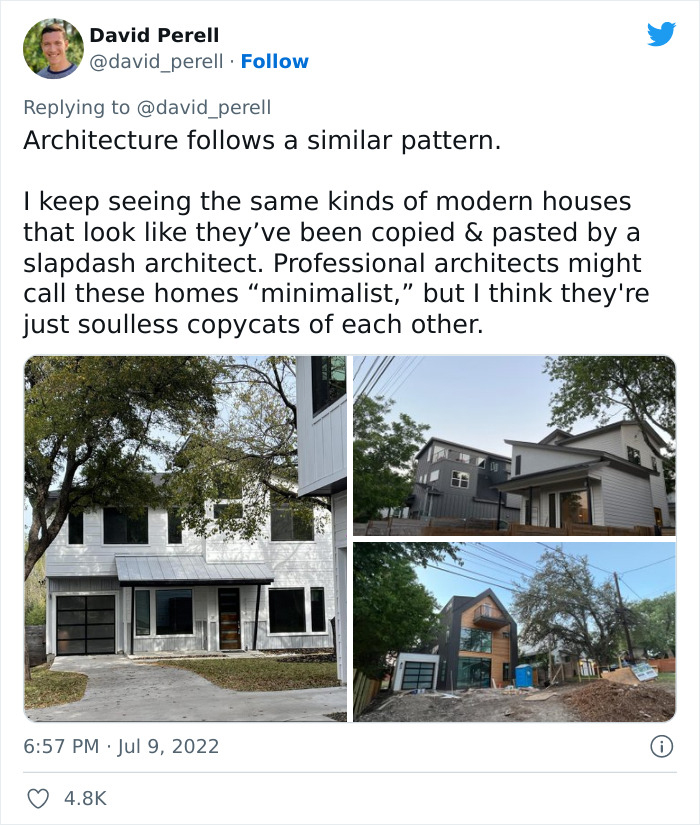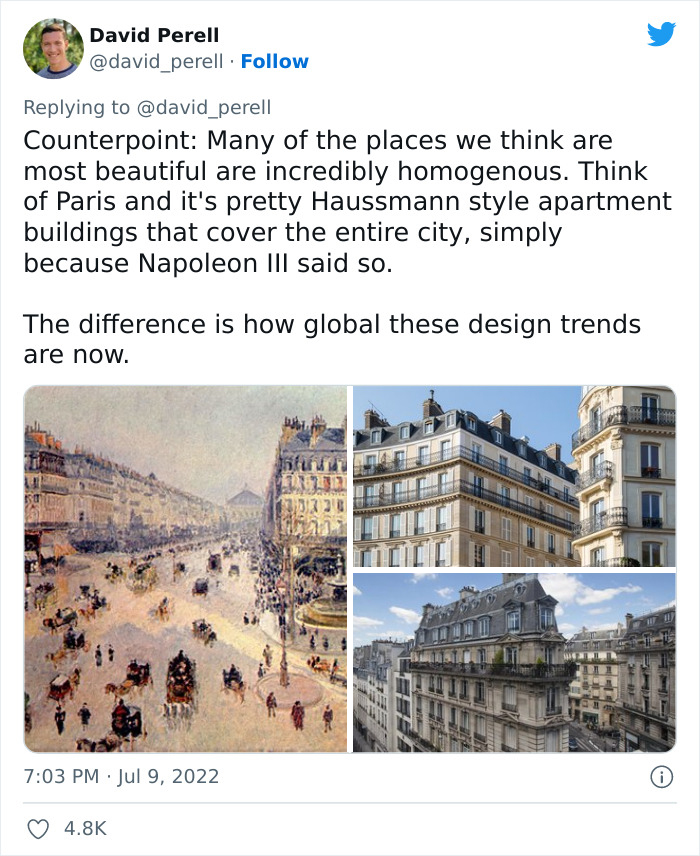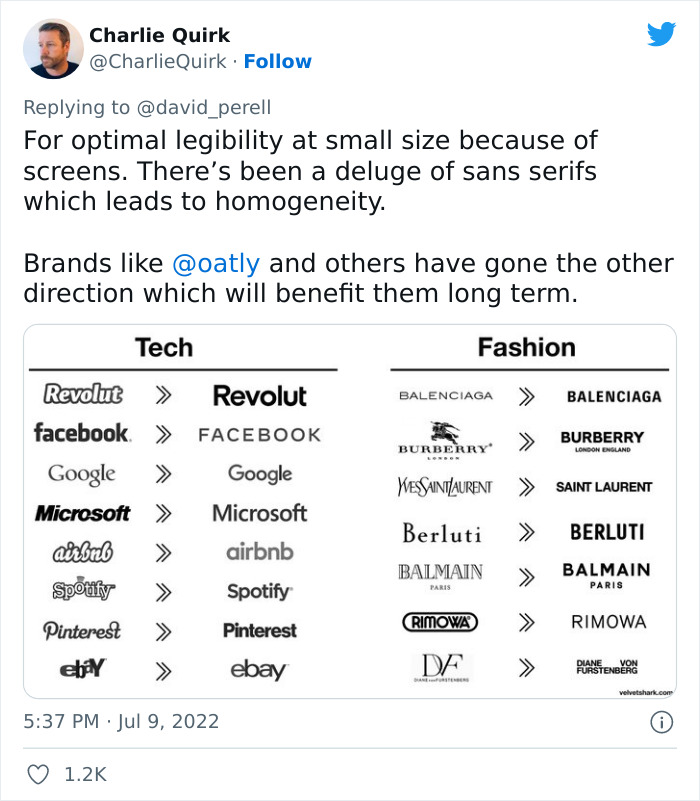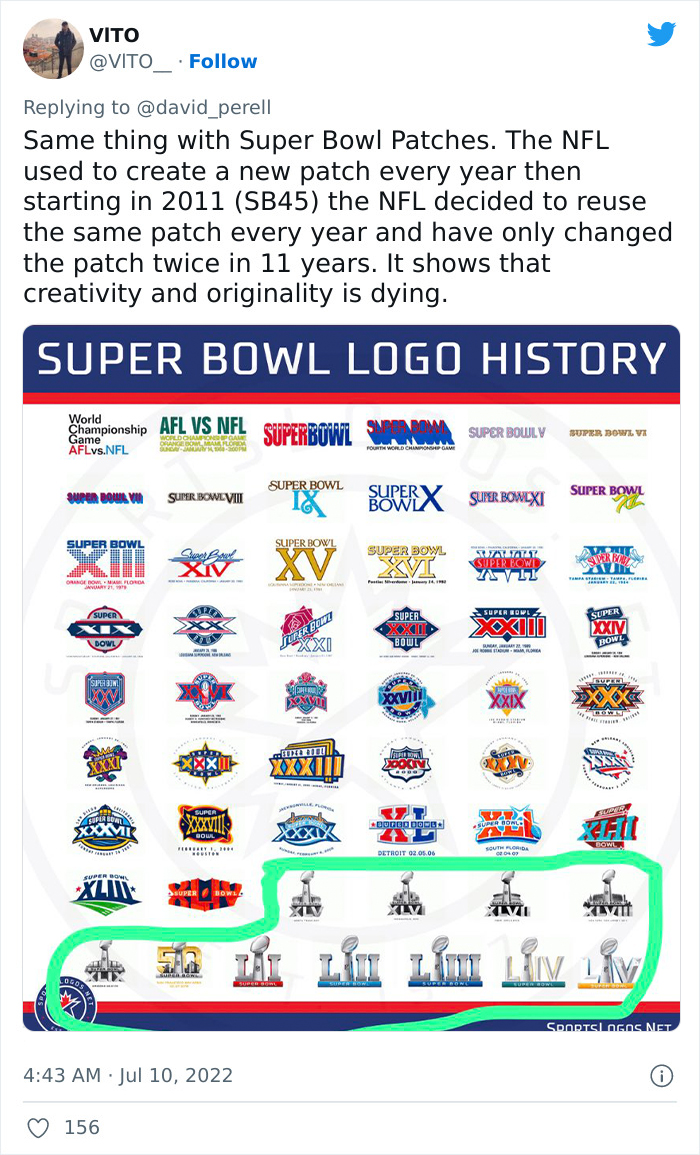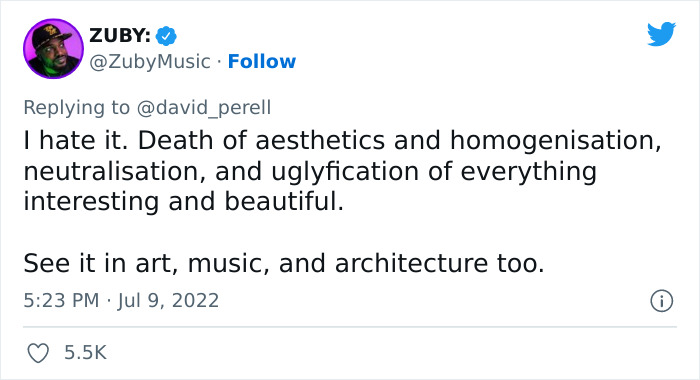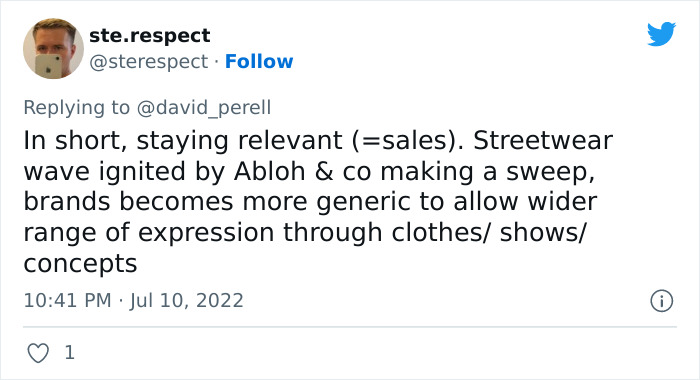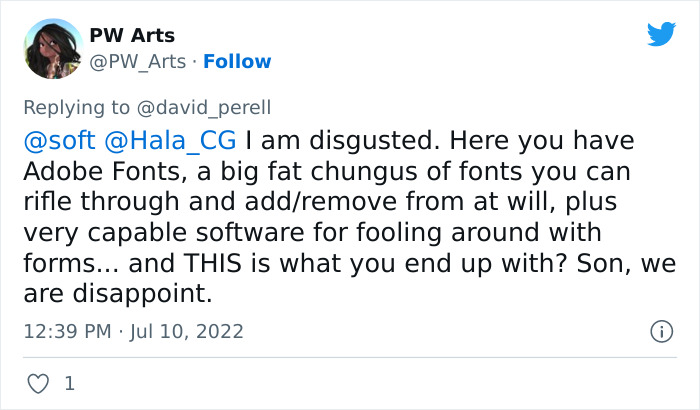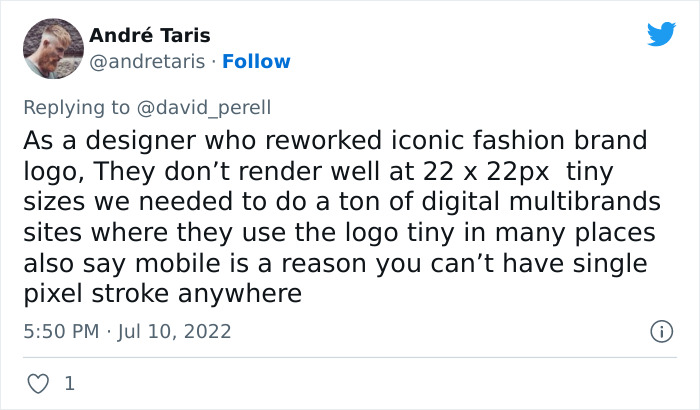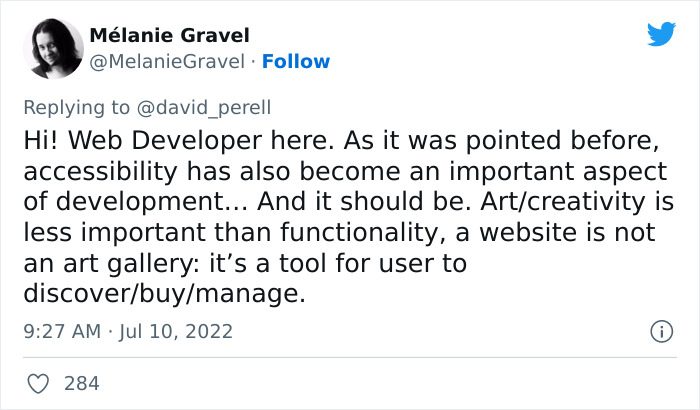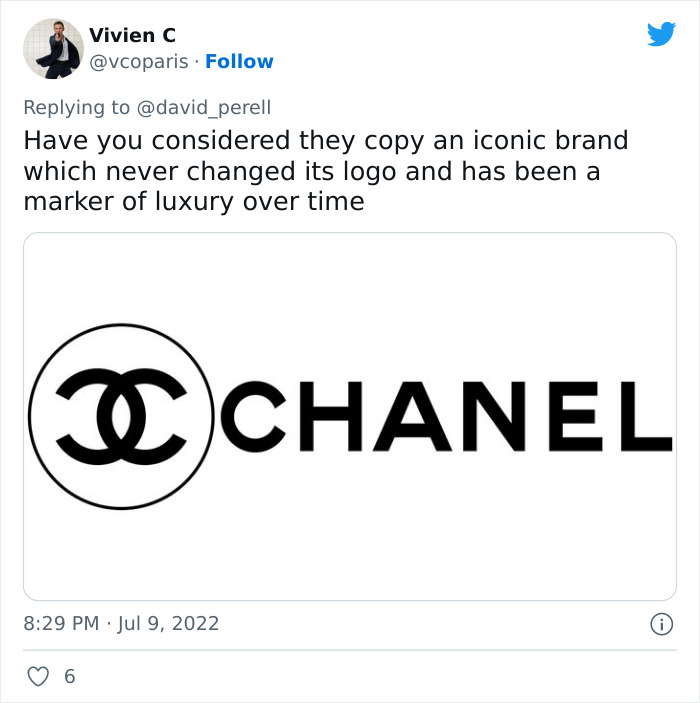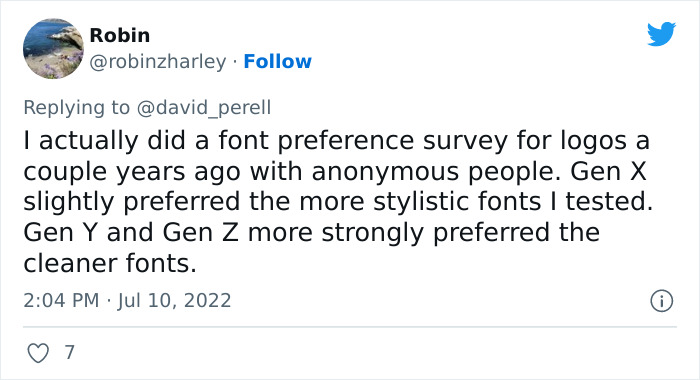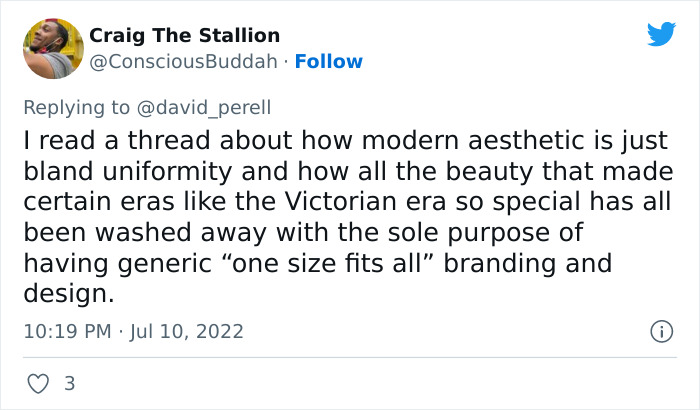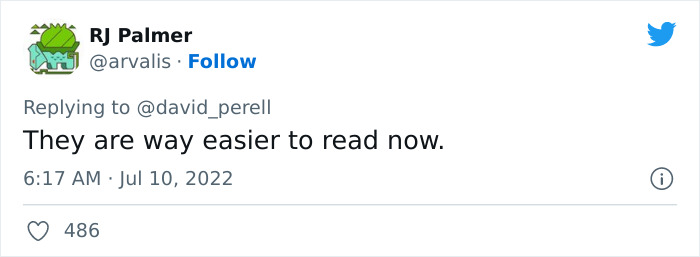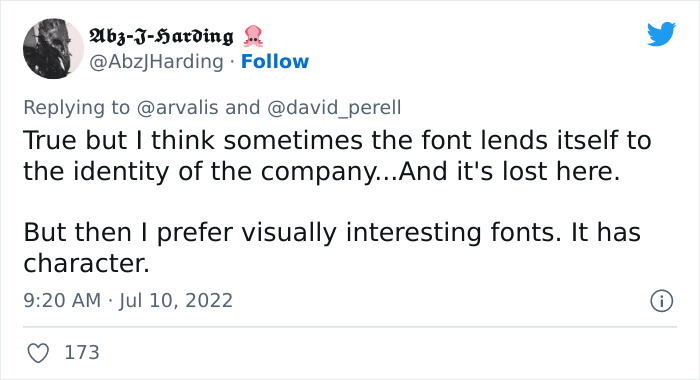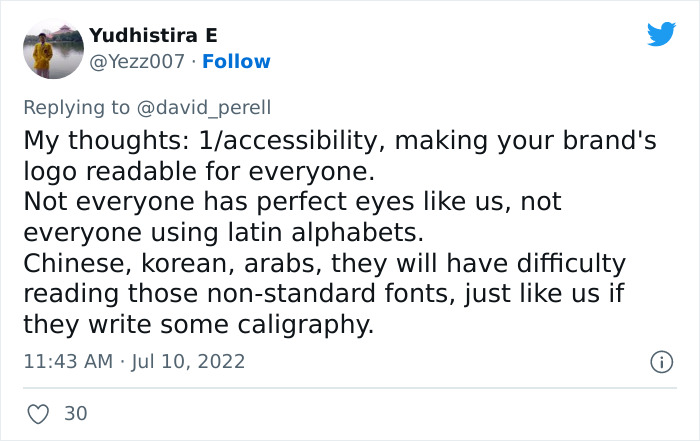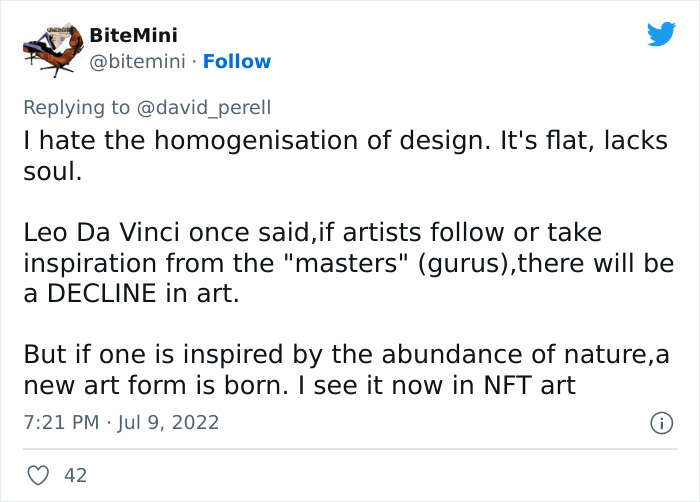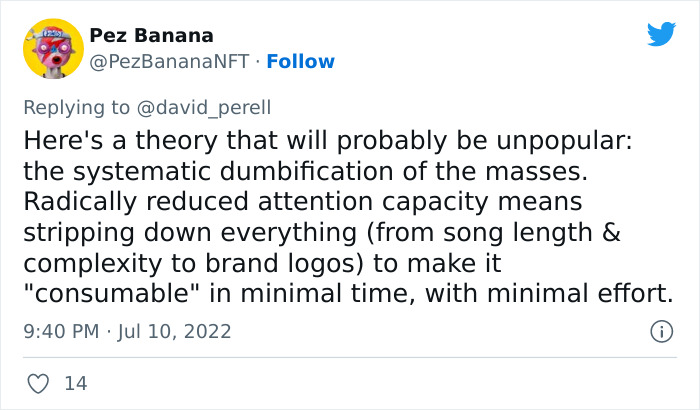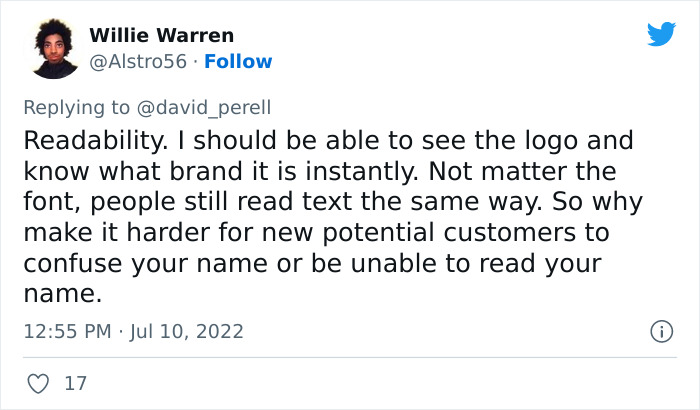Some manufacturers have such an enormous status that we immediately acknowledge not solely the brand but in addition the font they use. In the meantime, some logos are completely enrapturing and stick in our minds due to how aesthetic they’re. Nevertheless, there’s a worrying pattern that some have noticed: firm logos are all beginning to look just about the identical. Standardized. Homogeneous. Readable? Undoubtedly. However bland and (arguably) more and more soulless.
Author, podcast host, and educator David Perell defined what’s inflicting model logos to look alike in a viral Twitter thread. The excellent news is that issues are method clearer now than earlier than. The unhealthy information? This motion in direction of similarity will be seen in different areas, too. And that’s a trigger for concern. Scroll down to take a look at David’s evaluation of what’s actually happening and share your ideas within the feedback, expensive Pandas. And if we’ve received any brand designers or graphic artists in right here in the present day, we’d like to get your opinions, too!
Bored Panda reached out to Matt Johnson, Ph.D., for a chat about why logos are beginning to look so related as of late, and what the long run may maintain. Johnson is a client psychology specialist and professor at Hult Worldwide Enterprise Faculty and Harvard College, and the writer of ‘Branding that Means Enterprise: How one can Construct Enduring Bonds between Manufacturers, Customers and Markets.’ You’ll discover our full interview with the knowledgeable beneath. Now, we could?
Extra data: Twitter | Podcast 1 | Podcast 2 | WriteOfPassage.Faculty | Perell.com
Author David analyzed why so many issues, together with well-known firm logos, are beginning to look the identical
Picture credit: david_perell
Picture credit: david_perell
This form of design homogenization isn’t distinctive to only logos, although. It may be seen in just about each space in life
Picture credit: david_perell
Picture credit: david_perell
Picture credit: david_perell
Picture credit: david_perell
Picture credit: david_perell
In accordance with David, designs lose a little bit of their soul when effectivity is prioritized above uniqueness
Picture credit: david_perell
Picture credit: david_perell
Even writers have fallen prey to the identical developments and have a tendency to write down equally
Picture credit: david_perell
Picture credit: david_perell
Picture credit: JoyceCarolOates
Picture credit: david_perell
Artwork is not any exception, particularly within the company world
Picture credit: david_perell
Buildings are beginning to look very related, too, all around the world
Picture credit: david_perell
Picture credit: david_perell
Author David’s thread attracts some inspiration from the article revealed by Radek Sienkiewicz on VelvetShark. In accordance with David, in a hyper-connected world, aesthetic range suffers. Particularly when so many designers find yourself utilizing the identical instruments.
The problem is that in a globalized world, this homogenization of design selections begins to have an effect on way over model logos. It spreads to structure, furnishings, even telephone cubicles, doorbells, and avenue poles. When every part’s so data-driven, artwork, creativity, and the creativeness all undergo.
When you already know for a truth what fonts are probably the most readable by your prospects on-line, you’re extra prone to choose these as an alternative of one thing really distinctive. That’s, if views, clicks, and revenue are your main targets. This seems like an terrible world to dwell in. However this design dystopia isn’t one thing straight out of fiction—it’s slowly spreading its tendrils right here and now.
David argues that “once you strip away an excessive amount of of the non-essential, you lose the form of craftsmanship that endows an object with soul and makes life really feel significant.” In different phrases, optimizing every part finally ends up carving away the essence of the model and product.
That’s to not say that enhancing, iterating, and refining the design isn’t necessary—it’s very important—however on the finish of the day you need to truthfully consider whether or not all that effectivity is basically value it. High quality, actual high quality, can’t be quantified and examined by focus teams. And daring, distinctive aesthetic selections are an enormous a part of that. Actually, who’d favor to dwell in a world of spiritually gray, unassuming company logos? The place’s the power, the mojo, the pizzazz?
“Writers aren’t immune to those developments. It looks like each non-fiction e book follows the identical blueprint of straightforward phrases, quick sentences, and analysis papers to justify each apparent instinct,” David says that the attain of homogenization actually is that widespread. Just about no person’s protected! Company artists included.
David hopes to show “1000’s of individuals” to write down on-line and teaches an internet course referred to as ‘Write of Passage’ (we love the pun). He additionally hosts two podcasts, the ‘Write of Passage Podcast,’ in addition to the ‘North Star Podcast.’ The latter is a set of interviews with high-performing, profitable people.
Twitter customers had their very own theories about why logos are beginning to look so related
Picture credit: CharlieQuirk
Picture credit: VlTO__
Professor Johnson, from Hult Worldwide Enterprise Faculty and Harvard College, advised Bored Panda that there are just a few causes behind the pattern of brand homogenization. “The primary is that as we transfer in direction of a extra digital atmosphere, there’s a must make model logos as legible and as simple to establish as doable. The buyer’s consideration is strained much more within the on-line world, so logos can’t afford to be disfluent or difficult to course of,” he stated.
“Secondly, there additionally could also be a rising realization of the ‘fluency impact’: the comparatively strong behavioral science phenomenon that the extra fluent a font is written in, the extra likable and reliable the message. As extra manufacturers develop into accustomed to this phenomenon, they might wish to check new, extra fluently written logos to capitalize on this impact.”
In accordance with the client psychology specialist, the model and, by extension, the model brand, is pushed by the necessity to differentiate. Nevertheless, it doesn’t essentially must differentiate itself from all different manufacturers, solely from its most fast opponents throughout the similar business, at the same worth level.
“So whereas this brand pattern is seen throughout a big selection of industries, there could also be just one or two inside every business that will make this transformation, since if everybody did, they’d not be differentiating as nicely. There could also be a broader implication of this: if firms start to acknowledge that customers, a minimum of in digital environments, favor extra primary brand designs, manufacturers will rush to be the primary of their business to take action to plant their flag first. Whereas all manufacturers wish to be on the razor’s fringe of client preferences, no model needs to be seen because the copycat of their competitor,” the professor defined to Bored Panda.
“It’s additionally value mentioning that manufacturers can, and do have a number of trademarked logos which they personal. So whereas new logos could pop up for storied manufacturers like Coca-Cola, Google, and Burberry, these could not all be replacements however ‘options’ which might be being examined for these new client environments,” he stated that what we see may be an experiment of kinds to check the waters and see how individuals react.
Bored Panda requested Professor Johnson about what predictions he’d make concerning the future, and whether or not this pattern of brand homogenization is right here to remain. We have been additionally inquisitive about how shoppers may reply if extra firms find yourself utilizing more and more related logos.
“I think about the final pattern will persist, particularly within the digital atmosphere. If it seems to be the case that extra primary, legible logos are extra appropriate for on-line preferences, we may transfer to a system the place every main model has a minimum of two distinct model logos: one within the digital world, and one for the bodily world. That is already taking place to a sure extent since many manufacturers which have gone to a extra primary font haven’t utterly jettisoned their originals and retained them for particular makes use of,” the writer of ‘Branding that Means Enterprise’ shared with us.
“Since branding is basically about differentiation, there shall be an higher restrict to how a lot model logos can homogenize and go collectively on a single dimension. It’s nice to adapt to new client preferences, but when each model does that in the identical method, it fails to distinguish in a major method. That is why I feel there’s a ‘race’ inside every business to be the primary to take action, which then makes issues tougher for his or her opponents: ought to they persist in making their brand extra primary, on the threat of wanting like a copycat? Or ought to they cede that positioning and devise a approach to differentiate by another means?” the patron psychology specialist revealed the dilemma that firms face.
In accordance with the knowledgeable, manufacturers may must get artistic if it seems to be the case that customers need extra fluent, legible processing for on-line environments. “Not everybody will be first of their business and do that in a method that enhances their differentiation. Fortunately, manufacturers produce other identifiers that may specific their persona and separate themselves from shoppers,” the professor stated.
“For instance, manufacturers could double down on fluent soundmarks, tighter taglines, or talking product options which might be trademarked and unique. On this method, we may even see a a lot richer adaptation to the web world, which matches above and past the legibility of name logos,” Professor Johnson famous that there’s all kinds of how to depart an enduring influence on the patron. Logos are simply the tip of the iceberg.
Right here’s what some individuals stated on the subject. Whereas some hate the brand new pattern, others really prefer it
Picture credit: ZubyMusic
Picture credit: sterespect
Picture credit: PW_Arts
Picture credit: andretaris
Picture credit: NickHintonn
Picture credit: MelanieGravel
Picture credit: vcoparis
Picture credit: robinzharley
Picture credit: ConsciousBuddah
Picture credit: arvalis
Picture credit: AbzJHarding
Picture credit: Yezz007
Picture credit: bitemini
Picture credit: PezBananaNFT
Picture credit: Alstro56
[ad_2]
